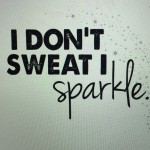 This article stems from the fact that I am always cold! I cannot seem to get warm. My hands and feet are always cold and I’m in a perpetual state of being an ice cube. Not to mention that the Mind/Body areas of the club are also cold, too cold in my opinion! So I decided to research the effects of heat on the body while you exercise. Here’s the scoop.
This article stems from the fact that I am always cold! I cannot seem to get warm. My hands and feet are always cold and I’m in a perpetual state of being an ice cube. Not to mention that the Mind/Body areas of the club are also cold, too cold in my opinion! So I decided to research the effects of heat on the body while you exercise. Here’s the scoop.
You don’t walk into a yoga class and expect to have the air conditioning on. You want to workout in an atmosphere that ensures your muscles are warm and supple and ready to stretch. The same goes for Pilates.
Temperature Guidelines
OSHA (Occupational Safety and Health Administration) gives a general recommendation for workplace temperature ranges to fall between 68-74 degrees Fahrenheit and humidity levels to range between 20-60%. Since these are pretty broad ranges, the International Fitness Association (IFA) developed more direction from the ranges recommended from both OSHA and the American College of Sports Medicine. IFA recommends that that gyms that provide aerobics, weight training, cardio, and Pilates should have an average temperature of 65-70 degrees Fahrenheit.
Calorie Burn
You burn more calories when it’s hotter too! Reason. Working out in hot temperature burns more fat — and calories — because your body has to work harder to cool itself. Your body releases heat through sweat, which comes from blood pumped to your skin. The hotter your body gets, the more blood your heart needs to pump to expel that heat. Finally, working out in a warmer temperature makes you sweat….sweat is good, it gets rid of toxins to detoxify the body.
For those of you who don’t like to sweat or need to always regulate your body temperature, studies show that working out in the cold might help you train longer and harder, but sustained endurance training in the heat has one unusual benefit: It can help you perform better in cool weather. Significantly better it found.
The Knee Joint – Effects of Heat on Performance
The other thing I wanted to find out was about temperatures for the knee joint. As you may remember, earlier in the year I started taking Tumeric to help alleviate joint pain, knee pain primarily. So I wanted to see what the ideal temperature is for the knee to perform well. What did I find?
It is commonly believed in medicine that using heat will increase the distensability and flexibility of soft tissue. If true, increased flexibility would be a positive factor to reduce injuries in sports.
The study examined 20 male and female subjects to determine if heat would increase extensibility of the anterior (ACL) and posterior cruciate ligaments (PCL) of the knee and reduce the force needed to flex the knee. Cold exposure was examined to see if it would have the opposite effect. There were 4 experiments in the series:
- The first was a room temperature series;
- the second was a series where cold was applied with an ice pack for 20 minutes;
- in the third, hydrocollator heat packs were applied for 20 minutes;
- and in the fourth, ThermaCare heat wraps were applied for 4 hours on the quadriceps and knee.
Tendon extensibility was measured with a KT2000. The force for flexing the knee was measured by passive movement being applied (CPM) to the knee through 30° and the force required to move the leg was measured.
The results show that the anterior and posterior cruciate ligament flexibility increased and the force needed to move the knee decreased with heat by about 25% compared to cold application.
Click here for the article
Conclusion:
Warm up before you workout for a few minutes. Ride the bike or walk on the treadmill for 5-15 minutes before a yoga or pilates class or a strength training workout. Also, check to see that the room you will be exercising in follows the OSHA guidelines of 65-70 degrees. Lastly, make sure that your instructor does a proper warm up before getting into the more athletic stretches or exercises. A prime example is The Hundred in Pilates. It makes your focus on your breath and your core and while doing that you are pumping your arms to circulate blood and oxygen to wake you and your muscles up!
There you have it! Let’s get our sweat on!
